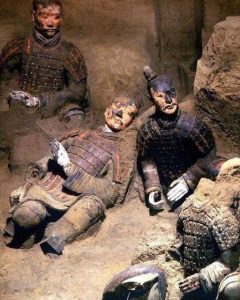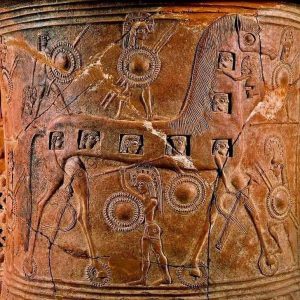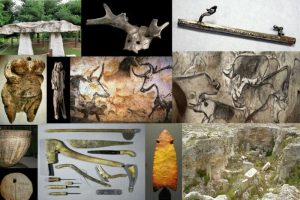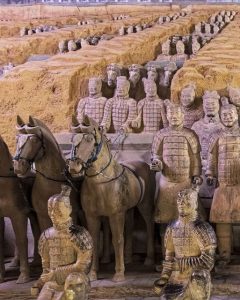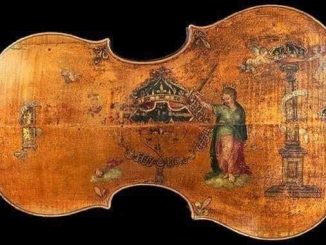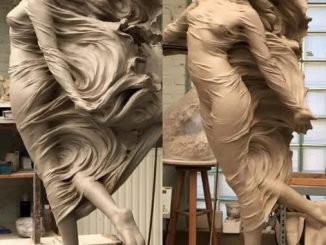The Mykonos Vase, a remarkable terracotta pithos dating back to around 670 BC, holds the distinction of featuring the earliest known depiction of the famous “Wooden Horse” from the Trojan War. Discovered on the island of Mykonos in the Cyclades, this artifact not only serves as a crucial link to our understanding of ancient Greek art and mythology but also provides invaluable insight into the narrative traditions surrounding the epic Trojan War.

The vase itself is a masterful work of art, intricately decorated with scenes that echo the tales recounted by Homer in the Iliad. The image captured here vividly illustrates the critical moment when the Greeks, having seemingly departed, leave behind the Wooden Horse as a deceptive gift to the unsuspecting Trojans. This scene is not just a moment of intrigue but also a turning point in the story that would lead to the fall of Troy.
In the depicted scene, the horse stands at the center, large and imposing, with warriors hidden within its hollow body—among them, the legendary Odysseus, the mastermind behind this cunning plan. The figures around the horse, both human and divine, portray the mixed emotions of warfare: strategy, bravery, deceit, and divine intervention, highlighting the complex relationship between humans and gods in Greek mythology.
What makes the Mykonos Vase particularly significant is its age and the detail of its craftsmanship. The style of the vase is indicative of the geometric period of Greek art, characterized by linear motifs and ordered registers that narrate stories in a clear, methodical manner. This period was crucial in the evolution of Greek artistic expression, setting the foundations for what would become the classical style celebrated in later centuries.
The discovery of the vase on Mykonos, a significant maritime center of the ancient Aegean, suggests that the tale of the Trojan War was not only a cornerstone of Hellenic cultural identity but also a popular subject for art and decoration. This artifact underscores how deeply the story of the Wooden Horse was embedded in the psyche of ancient Greeks, symbolizing ingenuity and trickery as much as it did the horrors of war.
Today, the Mykonos Vase is not just an object of historical curiosity; it is a window into the world of ancient Greek warfare, politics, and religion. It reflects the values, beliefs, and artistic achievements of a civilization that, though millennia old, continues to fascinate and inform the present.
For historians, archaeologists, and lovers of mythology, the Mykonos Vase is a priceless piece of antiquity that provides a more nuanced understanding of the Trojan War. It serves as a reminder of the enduring power of storytelling and the profound impact that myths can have on cultural development and artistic expression. The Wooden Horse, as depicted on this ancient vase, remains one of the most enduring symbols of cunning and strategy in warfare, a testament to the complex and multifaceted nature of human conflict.
